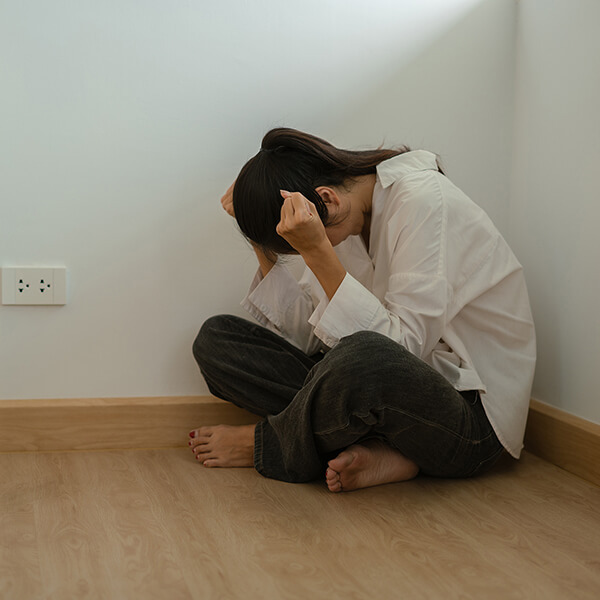
Anorgasmia means having trouble or being unable to reach orgasm. This can affect both men and women. It can hurt confidence and strain relationships. In this article, we explain what anorgasmia is. We also cover why it happens and how to find help. Finally, we invite you to visit our DOXXES store on North Freeway / FM 1960 for products that can help.
What Is Anorgasmia?
Anorgasmia is when someone cannot have an orgasm even with enough interest and stimulation. There are three main types:
- Primary Anorgasmia: A person has never had an orgasm.
- Secondary (Acquired) Anorgasmia: A person once had orgasms but lost that ability later.
- Situational Anorgasmia: A person can orgasm in some situations but not in others.
Knowing which type applies to you is the first step to finding a solution.
Why Does Anorgasmia Happen?
Anorgasmia can come from both the mind and the body. Often, more than one factor plays a role.
Mental Causes
- Stress and Worry
- Concerns about work, money, or family can keep the mind busy.
- When the mind is busy, it is hard to focus on pleasure.
- Depression or Anxiety
- Feeling sad or anxious can lower interest in sex.
- Mood issues can block the ability to orgasm.
- Past Trauma
- A history of sexual abuse or negative experiences can create fear.
- This fear can make sexual activity feel unsafe.
- Relationship Problems
- Arguments, lack of trust, or poor communication can reduce desire.
- Without closeness, pleasure can fade.
Physical Causes
- Hormone Changes
- Low testosterone in men or low estrogen in women can reduce sexual response.
- Hormone shifts often occur with age, pregnancy, or menopause.
- Side Effects of Medication
- Some antidepressants, blood pressure drugs, or birth control pills can make orgasm harder.
- Talk to your doctor if you think medicine is to blame.
- Chronic Health Conditions
- Diabetes, multiple sclerosis, or past pelvic surgeries can affect nerves.
- Nerve damage can block the signals needed for orgasm.
- Nerve Injury
- Spinal cord or pelvic injuries can stop the nerves from working properly.
Often, anorgasmia results from two or more of these causes combined.
Situational Anorgasmia in Men
Situational anorgasmia in men means a man can climax in one setting but not in another. For example:
- Alone but Not with a Partner: A man can orgasm when he is alone but not during sex with a partner.
- Position-Related: Some sexual positions may not provide enough pleasure.
- Performance Anxiety: Worrying about lasting too long or pleasing a partner can block orgasm.
- Habit of Certain Porn: Watching specific porn repeatedly can make real-life sex feel less exciting.
How to Spot Triggers
To deal with situational anorgasmia in men, try these steps:
- Keep Track: Note when orgasms happen easily (e.g., when alone) versus when they do not (e.g., with a partner).
- Compare Factors: Look at stress levels, mood, and setting in each case.
- Try Small Changes:
- Experiment with new positions or use more lubricant.
- Change the speed, pressure, or type of touch.
Even small tweaks can make a big difference over time.
Female Anorgasmia
Female anorgasmia affects many women at some point. Nearly half of women report some difficulty reaching orgasm. Causes can overlap with those in men, but some are unique to women:
Body and Health Factors
- Clitoral Stimulation
- Most women need direct touch on the clitoris to orgasm.
- Relying on vaginal penetration alone may not be enough.
- Hormone Shifts
- Pregnancy, childbirth, breastfeeding, or menopause can change hormone levels.
- These shifts can lower sensitivity and reduce lubrication.
- Pelvic Floor Muscles
- Muscles that are too tight or too weak can reduce pleasure and block orgasm.
Mental and Social Influences
- Body Image
- Feeling unhappy about one’s body can make it hard to relax.
- Lack of Sexual Education
- In some places, girls and women get little info about their bodies.
- This can lead to guilt or shame around exploring sexuality.
- Poor Communication with Partner
- Not sharing likes and dislikes can keep women from finding what feels best.
- Past Trauma
- A history of sexual abuse or assault may cause fear that blocks orgasm.
Steps to Help Female Anorgasmia
- Learn Your Body
- Spend time alone to find out what kind of touch feels best.
- Focus on the clitoris, as it often needs direct stimulation.
- Talk with Your Partner
- Share what works and what does not.
- A partner who listens and adapts can make sex much better.
- Use a Vibrator
- A clitoral vibrator can give steady, gentle vibrations that improve pleasure.
- Many women find it easier to orgasm with a vibrator than by hand alone.
- Try Pelvic Floor Therapy
- A therapist can show exercises to strengthen and relax muscles.
- Better muscle control can lead to stronger orgasms.
How Doctors Diagnose Anorgasmia
A doctor or health professional may do the following:
- Review Medical History
- Talk about current health issues, past surgeries, and medicines.
- Discuss Sexual History
- Describe when orgasms happen easily and when they do not.
- Do a Physical Exam
- Check for hormone imbalance, pelvic health, or nerve issues.
- Run Lab Tests
- Test hormone levels, such as testosterone or estrogen.
- Check for diabetes or thyroid problems.
- Screen for Mental Health
- Look for signs of depression, anxiety, or past trauma.
Seeing a urologist, gynecologist, sex therapist, or counselor can help find the right mix of treatments.
Ways to Treat and Cope with Anorgasmia
There is no single cure for anorgasmia. Often, a blend of methods works best.
1. Counseling and Therapy
- Cognitive Behavioral Therapy (CBT)
- This shifts negative thoughts about sex to more positive ones.
- Reduces anxiety around trying to orgasm.
- Sex Therapy
- A sex therapist guides you and your partner through exercises.
- Helps build intimacy, ease worries, and try new ways to increase pleasure.
2. Medical Treatments
- Review Medications
- If an SSRI or blood pressure drug blocks orgasm, a doctor may switch drugs or adjust the dose.
- Hormone Therapy
- For women with low estrogen, creams or pills may help.
- For men with low testosterone, approved treatments can boost libido and sensitivity.
3. Behavioral Tips
- Self-Exploration
- Spend time alone learning what feels good.
- This builds confidence and helps your partner know what you prefer.
- Sensate Focus Exercises
- Focus on enjoying the sensations rather than rushing to finish.
- This lowers pressure and keeps you relaxed.
4. Using Sexual Aids
- Vibrators and Toys
- For women, a clitoral vibrator offers consistent, targeted stimulation.
- For men, a prostate massager can help reach stronger orgasms.
- Couples Devices
- Wearable or remote-controlled vibrators let partners stay close while giving direct stimulation.
- These tools can help both partners learn new ways to connect.

How Doxxes.love Can Help
At Doxxes.love, we offer tools designed to support healthy sexual function:
- Clitoral Vibrators
- Shaped for comfort and easy to clean.
- Multiple speed settings help you find what works best.
- Prostate Massagers
- Built to give men deeper, fuller stimulation.
- Can help with situational anorgasmia in men.
- Couples Devices
- Wearable vibrators allow hands-free play.
- Partners can explore new ways to connect without added pressure.
- Simple Guides
- Each product comes with clear instructions on safe use, cleaning, and beginner tips.
Using these products along with therapy or medical care often speeds up progress.
Talking About Anorgasmia with Others
Opening up about anorgasmia can feel hard. Try these tips:
Be Honest
- Be Honest
- Share your feelings, even if it feels awkward.
- Being open can build trust.
- Use "I" Statements
- Say "I feel worried when I can't orgasm" instead of "You don't satisfy me."
- Pick the Right Time
- Choose a calm, private moment without distractions.
- Learn Together
- Browse trusted websites or watch short videos on anorgasmia as a team.
- Seek Help Early
- If stress around sex grows, talk to a licensed sex therapist or counselor soon.
Visit Our DOXXES Store on North Freeway / FM 1960
If you want to try products in person, come see us at DOXXES on North Freeway / FM 1960. Our friendly team can help you find the right tools for your needs. We offer a discreet, welcoming space to learn and shop. Stop by and let us guide you toward solutions that fit your comfort level and goals.
Conclusion
Anorgasmia, whether situational anorgasmia in men or female anorgasmia, is common but treatable. By learning the meaning of anorgasmia, spotting its causes, and using proven therapy methods alongside carefully chosen sex toys, you can find pleasure again.
If you or your partner often cannot reach orgasm, know that help is available. Open communication, professional guidance, and quality products from Doxxes can lead you back to confidence, intimacy, and enjoyment. We welcome you to visit our DOXXES store on North Freeway / FM 1960 for personalized help and to browse our range of support tools.
